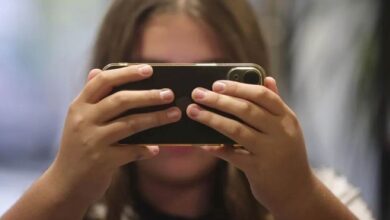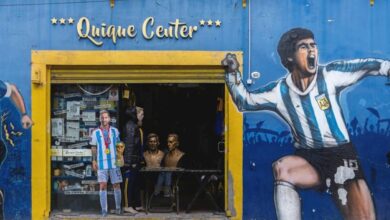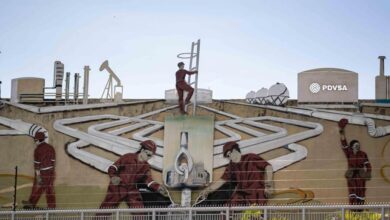Iván Duque’s mistakes before the UN
The president of Colombia went badly before the UN when different medias said the images shared in his dossier were false.

President of Colombia, Iván Duque presenting evidence to the UN about Venezuela. / Photo: Nicolás Galeano – Presidency
LatinAmerican Post | Juliana Suárez
Listen to this article
Leer en español: Los errores de Iván Duque ante la ONU
One day after the 74th assembly of the United Nations, the newspaper El Colombiano, from Medellín, Colombia, went on to deny some assertions of President Iván Duque regarding the relationship of the government of Nicolás Maduro with the Colombian guerrillas, especially the ELN (National Liberation Army).
At the UN General Assembly, the president of Colombia presented a dossier in which he talked about different topics such as climate change, the country's economy, Venezuelan migration and, especially, the "dictatorship of Venezuela."
Regarding this issue, a 128-page National investigation on the links of the Venezuelan government with Colombian guerrillas would be included in the dossier that he presented. Some of the evidence were images that, according to Duque, the government had been able to prove that showed members of the ELN in Venezuela and had been taken during 2018, which would prove that Nicolás Maduro supports the illegal groups in Colombia. In the speech, Iván Duque affirmed that Maduro's actions were a threat to the peace of the country.
Publicaré apartes del documento entregado al Secretario General de @ONU_es , Antonio Guterres, titulado AMENAZAS A LA DEMOCRACIA, LA SEGURIDAD Y LA PAZ REGIONAL. Alerta sobre acciones terroristas de Grupos Armados Organizados con el apoyo de la dictadura Maduro. #PruebasVenezuela pic.twitter.com/AYarWQpl1b
— Iván Duque (@IvanDuque) September 26, 2019
Read also: Duque vs. Maduro: the UN received evidence against the Venezuelan president
The newspaper El Colombiano was the first to deny what Duque had confirmed before the UN. One of the images in the document, which was also published on the president's Twitter, showed uniformed people (members of ELN) playing with children.
The caption reads: "Penetration of the ELN in rural schools in the state of Táchira (a border area) for indoctrination purposes – April 2018". However, the Medellín newspaper stated that the image corresponded to ELN recruitment practices in El Tambo, Cauca (Colombia) in 2015. The media had at that time conducted an investigation into indoctrination practices in that region where they involved minors and, as they reported, that image was provided by Military Intelligence.
The AFP press agency began to develop an investigation to find the real origin of the image and to know why the government had used it by attributing it to Venezuela and with another date. According to the agency, “a source from the Casa de Nariño, government headquarters, assured AFP that the image was taken on June 2013 in the Venezuelan state of Táchira and published in 2018 in a report by the Venezuelan NGO FundaRedes, which is described on its website as defender of human rights and democracy”.
Indeed, in June 2013, a story was published in which the ELN had contact with schools on the border. However, the image that dates, according to El Colombiano, in 2015, does not appear in the report. The government source assured AFP that they were investigating the reason why Military Intelligence gave that photo to the Colombian newspaper dating 2015.
However, even if it was proven that the photo was in 2015 in Cauca or in 2013 at the border, the document states that it was in April 2018 (as the NGO report).
Another image that later denied their truth was one of a cabin with the initials of the guerrilla group (ELN) marked all around. The 128-page document states that this image is part of a massacre after clashes in Bolívar (state of Venezuela) between the Colombian guerrilla group and Venezuelan gang members known as “Pranes groups”.
This statement was denied by Luis Robayo, AFP photographer, who said that the image was taken by him in the Catatumbo region, in Colombia. "I took this photo on September 20, 2018, on a trip I made to the Catatumbo region to make a report," Robayo told AFP.
Neither Nicolás Maduro nor the Venezuelan government waited to say something against Duque and his false claims. The president of Venezuela, with whom the Colombian government has an incessant dispute, said in a government broadcast that “Iván Duque is a shame, I do not know if to take him seriously… the king of 'falsos positivos', Iván Duque, at the UN, could be entitled ”. He also called him a "fool" and "porky", and referred to Colombia as "a failed state."
Also read: Can the UN condemn Juan Guaidó?
What does the Colombian government say?
AFP said a spokesman for the Ministry of Defense contacted the agency to apologize for using the photograph. In addition, he said that at least three images were used that have not yet come to public light: all of them from 2018 but taken in regions of Colombia (the one in Catatumbo, one in Chocó and one in Guaviare).
As for the image of the ELN with children, denied by El Colombiano, President Duque said that "it is a photo of context." In the same document, the president said, the precision is made that the images have different sources, one of those is that of the NGO report in 2018. “The dossier has both context and own photographs from Colombian intelligence,” he said.
Broadcasting fake news?
Fake news have reversed the relationship between politics and the media in recent years. Sometimes unintentionally, or through negligence, the media have disseminated information that have been proven not to be true. The issue is further complicated when those who disseminate this information are important political figures, as has happened on occasions with President Trump.
In this case, the issue is a bit more complicated. On the one hand, it was not news presented by a media before public opinion but was used as evidence before an international organization such as the United Nations. On the other hand, according to the statements of the members of the government to the media involved to apologize, it is evident that the same government was aware that the images were not related to the accusations.
These kinds of mistakes could cost the government especially in terms of its image and popularity. El Colombiano consulted Camilo Arroyave, political scientist and political analyst, who pointed out the image is affected, on the one hand by the popularity of the entity to which the complaint was made (the UN General Assembly) and “because it was the central issue that he presented in that scenario, so I needed all the clear sources to make a complaint of this caliber. ”




